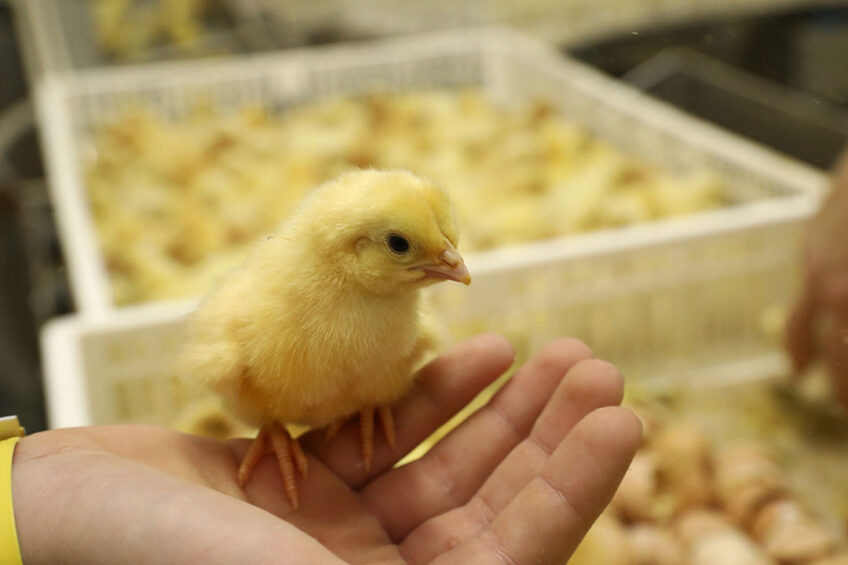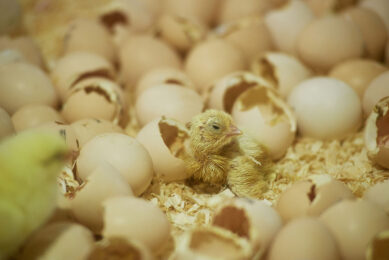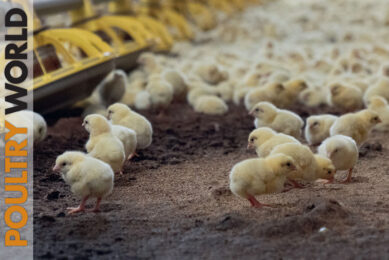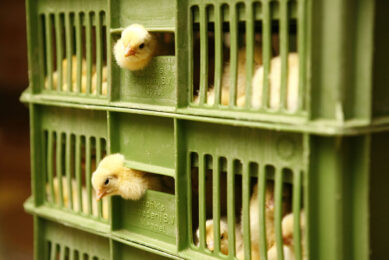Examining the effects of reduced incubation temperature

A new study found that lowering incubation temperature does not directly translate to lower embryo temperature in embryonated broiler-hatching eggs. Interestingly, the researchers found hatchability to improve with a lowering of incubation temperature.
Previous research has shown that the incubation temperature is not the same as the temperature experienced by the embryo, and embryo temperature has a greater influence on hatchability and embryonic development than incubator temperature. Therefore, the incubator air temperature may need to be adjusted to accommodate higher levels of embryo heat production.
As highlighted in other studies, since embryonic growth represents 30-40% of the total development time of the commercial broiler, incubation conditions may influence post-hatch broiler performance.
Lowering the temperature
In this study, researchers evaluated whether lowering incubation temperature at 12 days of incubation would affect embryo temperature in embryonated Ross 708 broiler-hatching eggs.
From 0 to 12 days of incubation, eggs were incubated under standard conditions (37.50°C). At day 12 of incubation, in ovo telemetry was used whereby temperature transponders (implantable and programmable) were aseptically placed on the inner air cell membrane to measure air cell temperature as an estimate of embryo temperature in eggs. Lying on the inner eggshell membrane overlaying the embryo, a transponder’s proximity to the embryo establishes air cell temperature readings more accurately than the eggshell temperature method for estimating actual embryo temperature.
In this study, 2 replicate still-air incubators were maintained at a standard-temperature treatment (37.5°C) or low-temperature treatment (35.6°C) between 12 and 21 days of incubation. The mean relative humidity in the incubators in the standard and low-temperature treatments were 58% and 59.08%, respectively.
Correlation of incubation temperature and embryo temperature
In the low-temperature incubation eggs, incubation temperature and air cell temperature were not significantly correlated. However, there was a significant positive correlation between incubation temperature and air cell temperature in the standard temperature incubation eggs, indicating an increase in air cell temperature (embryo temperature estimate) as incubation temperature increases.
The result was compared to a previous study observation where a conclusion was drawn that a protective reaction to incubation temperature cooling through increased skeletal muscle activity and carbohydrate metabolism can occur in embryos, despite their poikilothermic characteristics. This would provide an increase in the generation of metabolic heat that would counteract the effects of incubation temperature cooling/lowering and that would subsequently increase air cell temperature.
This reaction would likewise lead to an uncoupling of the tight relationship between incubation temperature and egg embryo temperature and may help to explain the lack of a close association between incubation temperature and air cell temperature in the low-temperature incubation eggs.
Hatchability and hatchling weight
The study found that the hatchability of fertile eggs containing live embryos at 12 days of incubation was 93.3% with the standard-temperature treatment and 100% with the low-temperature treatment. The highest hatchability values occurred between 20.5 and 21.1 days of incubation in the incubators belonging to the standard-temperature treatment, whereas the highest hatchability values in the low-temperature treatment occurred between 21.1 and 21.9 days of incubation.
Based on the above results, it was suggested that the Ross 708 embryo may receive some benefit from a lower incubation temperature that would provide for a greater loss of metabolic heat to accommodate its rapid rate of development. This potential explanation was further supported by the results of a previous study, which reported ‘no significant’ differences in the hatchability rates of Ross 308 broilers eggs incubated at either 37.6°C or 36.6°C from 10 to 18 days of incubation.
Contrary to hatchability observations, the results indicated that hatchlings in the low-temperature group experienced an approximate 14 to 19-hour delay in hatch compared to those with the standard incubation temperature. The mean hatching time in the standard-temperature treatment was 20.8 days of incubation (498 h of incubation), and in the low-temperature treatment was 21.4 days of incubation (513 h of incubation). Furthermore, chicks stopped hatching in the standard-temperature treatment by 21.7 days of incubation (521 h of incubation), whereas chicks in the low-temperature treatment continued to hatch up to 22.3 days of incubation (535 h of incubation).
In addition, researchers found hatchling weight to be lower in the low-temperature treatment (47 g) than in the standard-temperature treatment (50 g), supporting the suggestion of a faster rate of development in the embryos that were provided with a standard (37.5°C) incubation temperature between 12 and 21 days of incubation.
Future research
In conclusion, lowering incubation temperature from 37.5°C (standard-temperature treatment) to 35.6°C (low-temperature treatment) between 12 and 21 days of incubation lowered air cell temperature (embryo temperature estimate), increased hatching time and decreased hatchling bodyweight, indicating a related effect on embryo growth and metabolism. Lowering incubation temperature at 12 days of incubation to 35.6°C improved hatchability but the associated delay in hatch and decrease in hatchling weight need to be considered before possible commercial implementation.
Validating the technique used, the researchers concluded that air cell temperature readings using in ovo telemetry provide a closer and more accurate estimation of actual embryo temperature. They also proposed future research to examine the effects of incubation temperature other than 35.6°C and 37.5°C on air cell temperature and broiler embryo growth and metabolism in a forced draft incubator instead of still-air incubators.
With a forced-air incubator it is easier to maintain a consistent temperature and humidity at a constant level due to air circulation. Still-air incubators are relatively smaller and it is usually harder to manage airflow.

More about
In-ovo sexing opens door to on-farm hatching of layers
Aviagen applauds 2023 Nick French prize recipient Lotte Hebbink
How high incubation temperature affects embryonic broilers
 Beheer
Beheer










 WP Admin
WP Admin  Bewerk bericht
Bewerk bericht